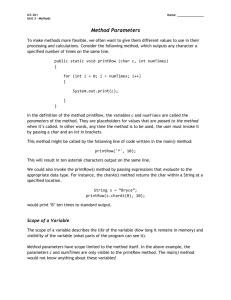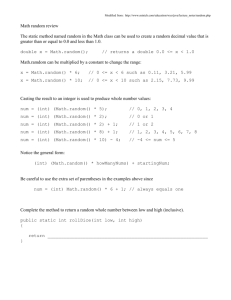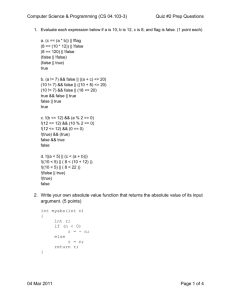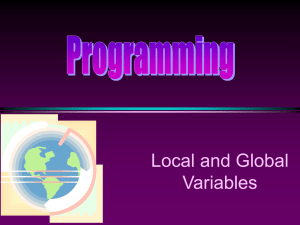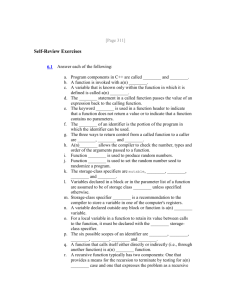March 28
advertisement
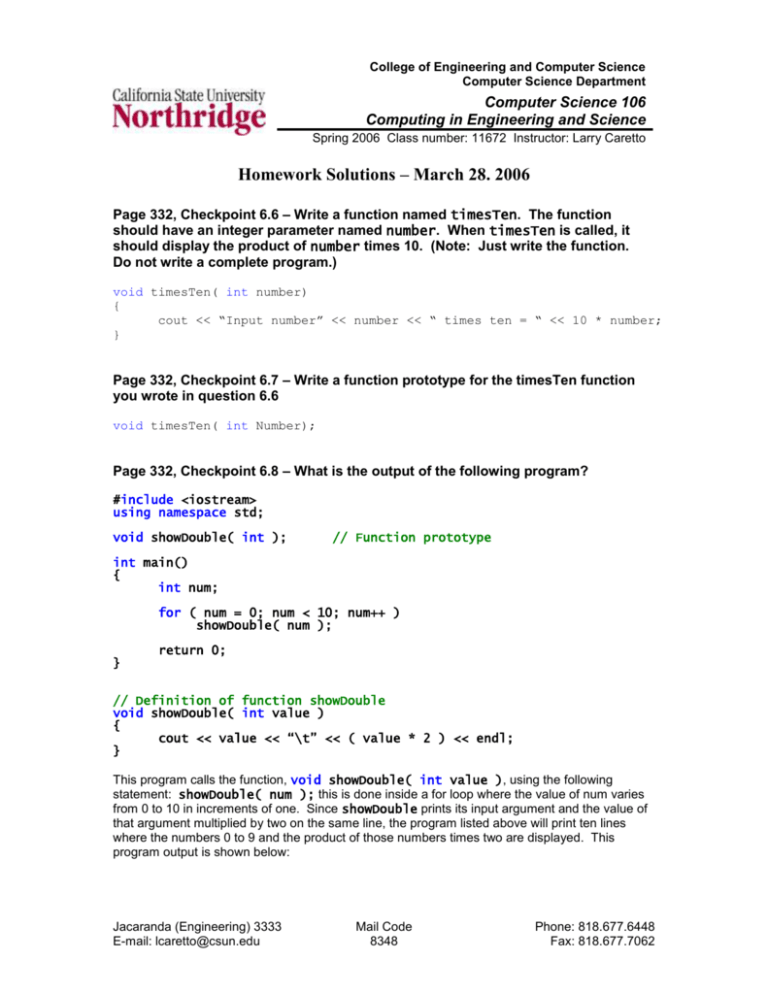
College of Engineering and Computer Science
Computer Science Department
Computer Science 106
Computing in Engineering and Science
Spring 2006 Class number: 11672 Instructor: Larry Caretto
Homework Solutions – March 28. 2006
Page 332, Checkpoint 6.6 – Write a function named timesTen. The function
should have an integer parameter named number. When timesTen is called, it
should display the product of number times 10. (Note: Just write the function.
Do not write a complete program.)
void timesTen( int number)
{
cout << “Input number” << number << “ times ten = “ << 10 * number;
}
Page 332, Checkpoint 6.7 – Write a function prototype for the timesTen function
you wrote in question 6.6
void timesTen( int Number);
Page 332, Checkpoint 6.8 – What is the output of the following program?
#include <iostream>
using namespace std;
void showDouble( int );
// Function prototype
int main()
{
int num;
for ( num = 0; num < 10; num++ )
showDouble( num );
return 0;
}
// Definition of function showDouble
void showDouble( int value )
{
cout << value << “\t” << ( value * 2 ) << endl;
}
This program calls the function, void showDouble( int value ), using the following
statement: showDouble( num ); this is done inside a for loop where the value of num varies
from 0 to 10 in increments of one. Since showDouble prints its input argument and the value of
that argument multiplied by two on the same line, the program listed above will print ten lines
where the numbers 0 to 9 and the product of those numbers times two are displayed. This
program output is shown below:
Jacaranda (Engineering) 3333
E-mail: lcaretto@csun.edu
Mail Code
8348
Phone: 818.677.6448
Fax: 818.677.7062
March 28 homework solutions
0
1
2
3
4
5
6
7
8
9
Comp 106, L. S. Caretto, Spring 2006
Page 2
0
2
4
6
8
10
12
14
16
18
Page 333, Checkpoint 6.9 – What is the output of the following program?
#include <iostream>
using namespace std;
void func1( float, int );
// Function prototype
int main()
{
int x = 0;
float y = 1.5;
cout << x << “
func1( y, x )
cout << x << “
return 0
“ << y << endl;
“ << y << endl;
}
void func1( float a, int b )
{
cout << a << “
a = 0.0;
b = 10;
cout << a << “
}
“ << b << endl;
“ << b << endl;
This program prints the values of x and y then calls the function, void func1(float a, int
b ), using the following statement func1( y, x ); the subroutine prints the values of a and
b then redefines a and b and prints them again. Finally, control is returned to the calling function,
main, which prints the values of x and y. The output is shown below with an explanation to the
right, written as a C++ comment.
0
1.5
0
0
1.5
0
10
1.5
//
//
//
//
First line is from main
Second line is from func1
Third line is from func1
Fourth line is from main
The first and last line, printed from main have the same values for x and y. The changes to the
values of a and b in the function func1 do not affect the values of x and y. This is true because
only the values of x and y are passed into the function. The function cannot change these values.
The second output line has the values of a and b which are set by the call to func1 from main.
The third output line has the values of a and b which are set in the routine.



